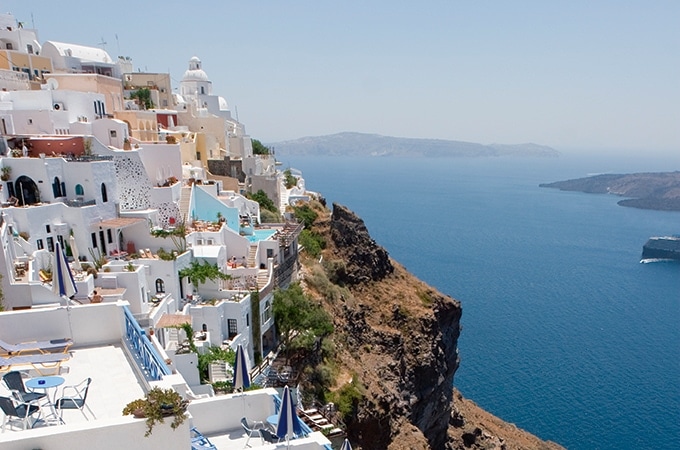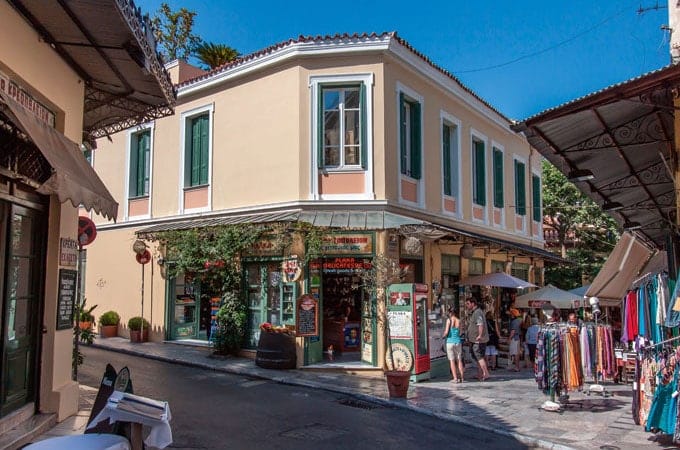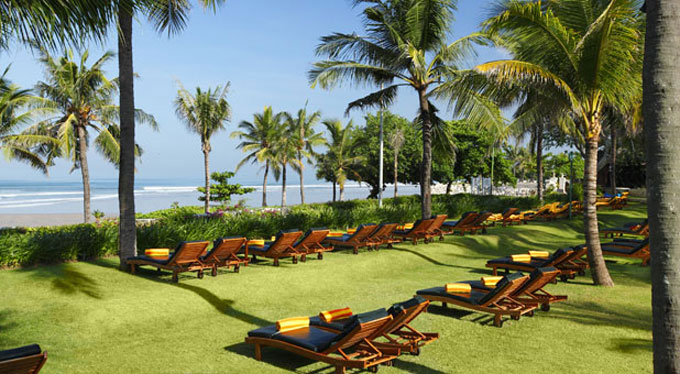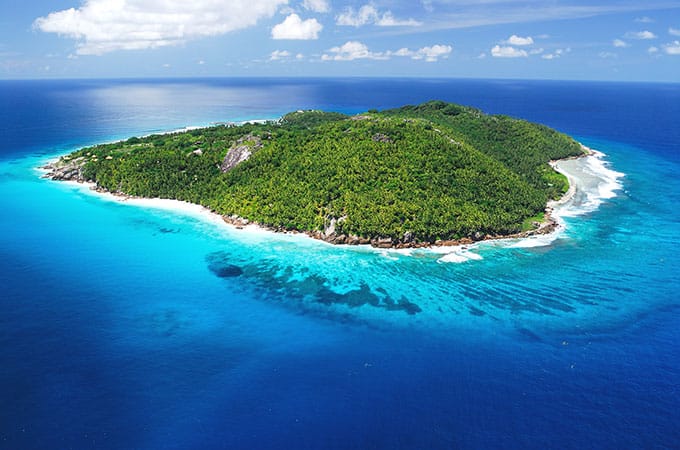No superlatives sufficiently grasp Santorini’s uniqueness. Its startling, mystifying and surreal landscape draws scores of neck-bent visitors who sail into its glittering caldera every year. Lava-encrusted cliffs dramatically explode upwards; a timeless natural sculpture caused by repeated volcanic explosions. Indeed, this once round island has been ravaged by several igneous eruptions, most recently in 1956 when over 2000 homes tumbled into the Aegean. But it was the cataclysmic event of 1650 BC that shattered Santorini so ferociously, disgorging billions of tons of magma from the island’s heart up into the skies. The awesomely scarred face of the remaining crescent, red beaches, cobalt caldera and offshore islets remain frozen in time.
Reached by cable car or donkey, Santorini’s cliff-top villages are a scattering of pint-sized cave- houses with barrel-vaulted ceilings, press-studded unrealistically to the perpendicular caldera walls. As if dusted with icing sugar by a giant’s hand, they scream out to starry-eyed couples seeking an intimate hideaway.
The pedestrianised lanes of Fira, the island’s capital, are frequented by those who know their precious metals and stones.The exquisite gold quarter, particularly on Ipapantis Street, offers a glitzy (and wallet-stripping) experience for after-hours wanderings. Lit like a stage-show, jewellery stores vie for attention with handmade 18-carat gold archaic designs. Gold lovers also delight in viewing the 17th-century BC gold ibex, now in the safe harness of the nearby Museum of Prehistoric Thera. Astonishingly, this figurine remained buried in a box beneath millennia of lava, and was excavated in impeccable condition from the Minoan city of Akrotiri in 1999.
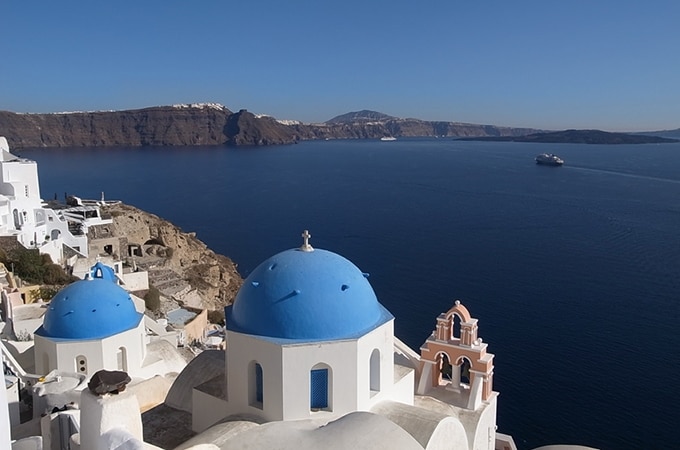
Pompeii-like Akrotiri, in the island’s south, was established during the early 3rd millennium BC. Since 1967, it has been (and continues to be) slowly excavated, unearthing multi-storey buildings, elaborate frescos and ceramic storage jars containing traces of olive oil and onions. Prosperous ancient Akrotiri reveals a sophisticated society that enjoyed indoor lavatories and underground aqueducts, unheard of for thousands of years thereafter. The site was under repair after a tragic roof collapse in 2005, but reopened in mid 2011.
One of the most sensory experiences Santorini offers is a sail across its caldera to the volcanic islet of Nea Kameni. Board the Bella Aurora, the island’s 18th-century replica schooner, and arrive at a lime-green sulphurous bay. Climb up to the volcanically active crater to see its steam and smell its sulphur as its heat penetrates your (thick!) shoes. You’ll then deserve to detox in the nearby hot springs before dining on traditional mezes and local wine back on the yacht. If that’s got the romantic instincts stirred, you can even get married on-board.
From the crusted rim of Santorini’s caldera is the most iconic sunset-viewing spot in the Greek Islands – perhaps the world.Walking for sunset- hour from Imerovigli (the caldera’s highest town), to Oia’s amphitheatrical setting is emotive. Find a craggy rampart to snuggle up on to absorb Santorini’s elemental beauty.The spectacle leaves you jaw-gaped as the sinking sun descends to its flame-grilled close. And forgive the sceptics who insist you can’t hear the sun sizzle as it succumbs to the horizon’s hungry hotplate – they haven’t been to Santorini yet!
